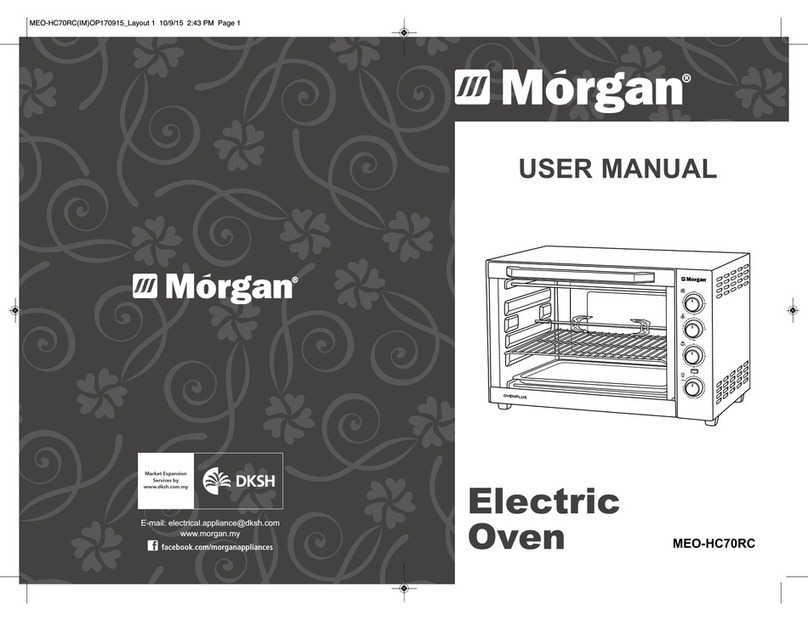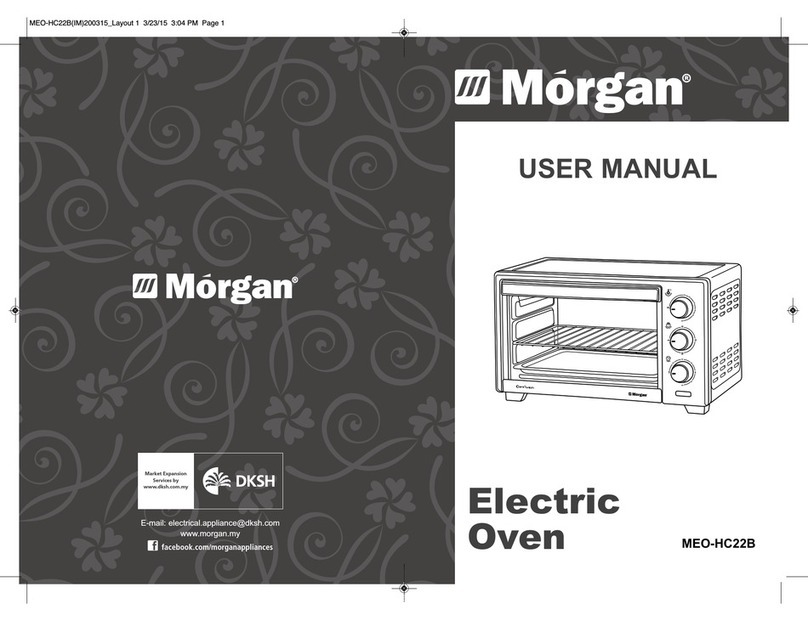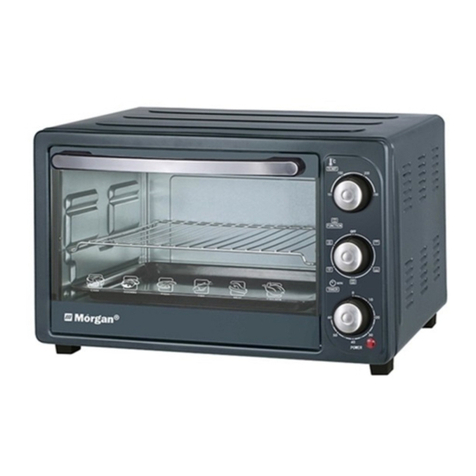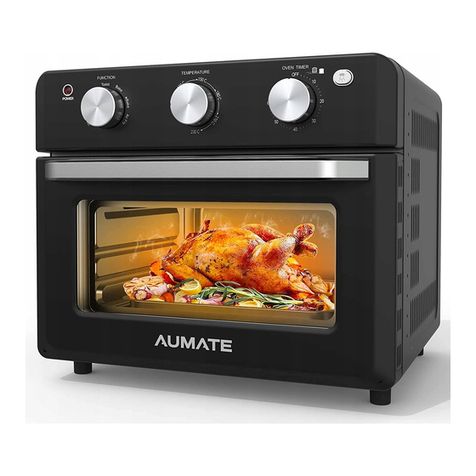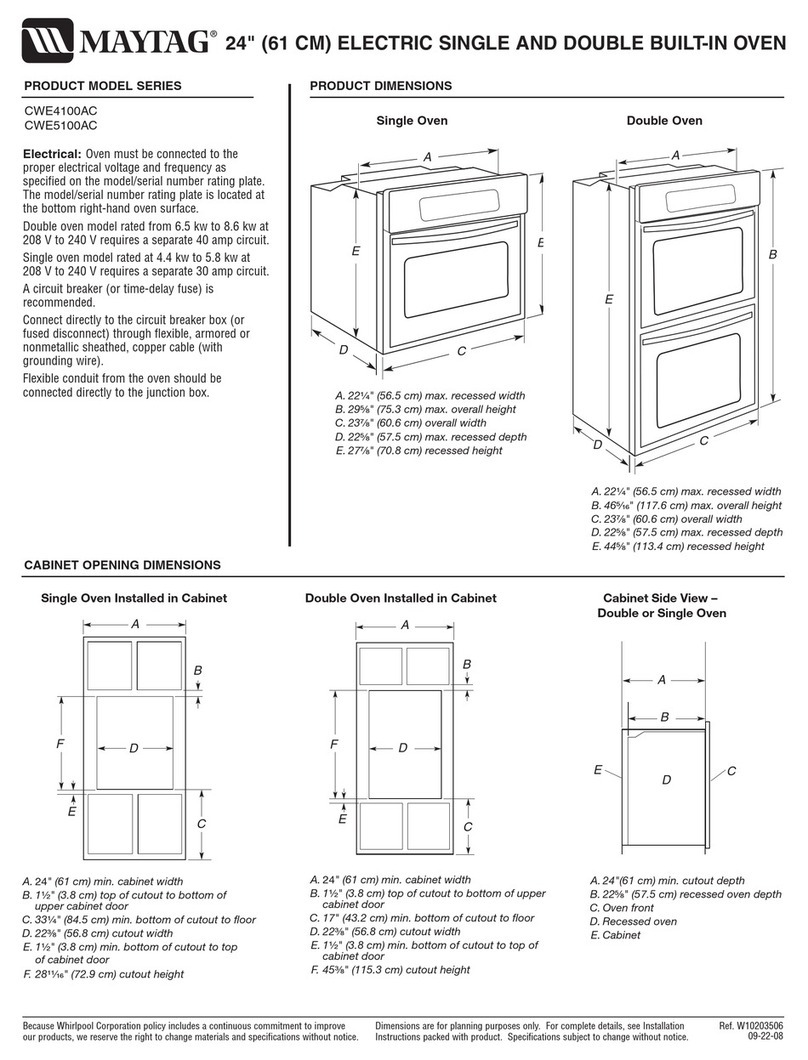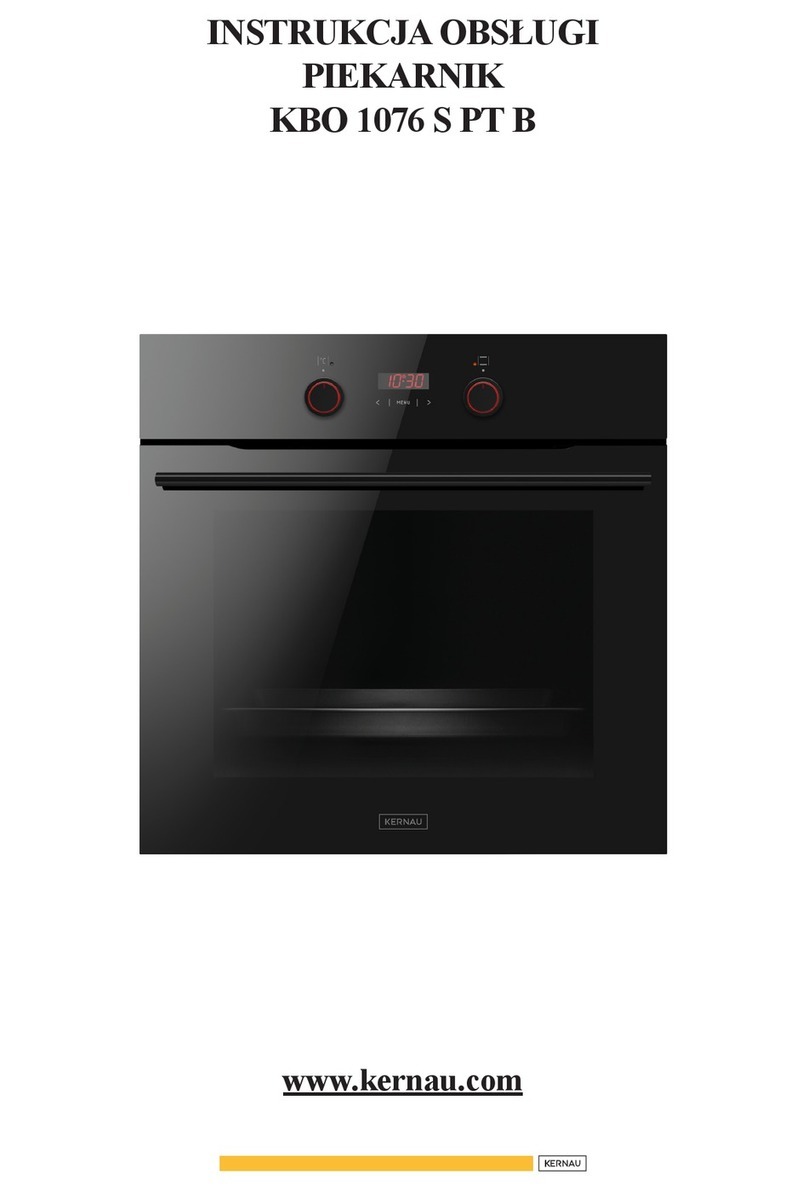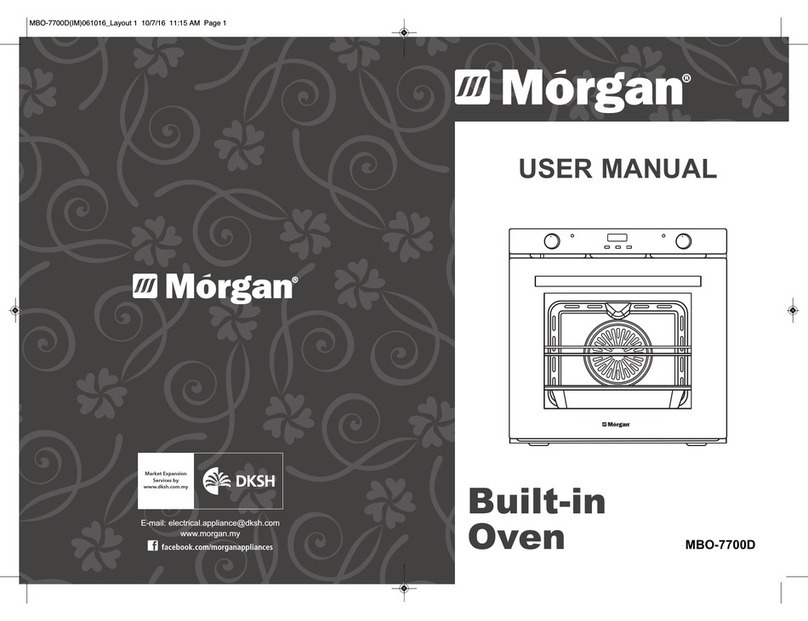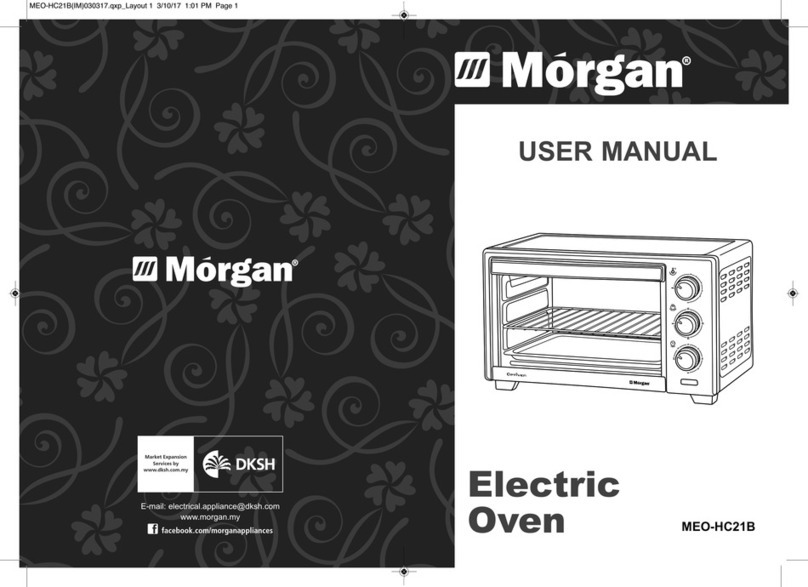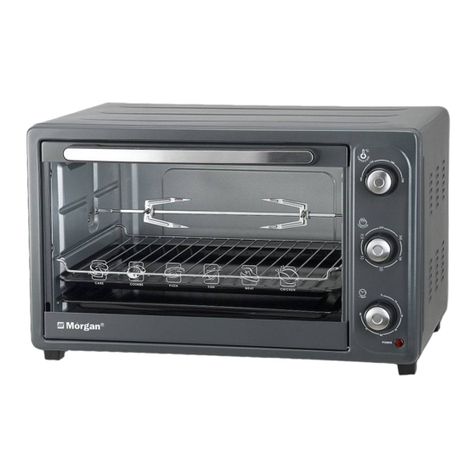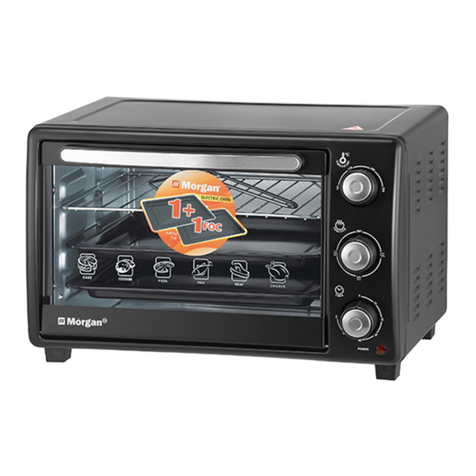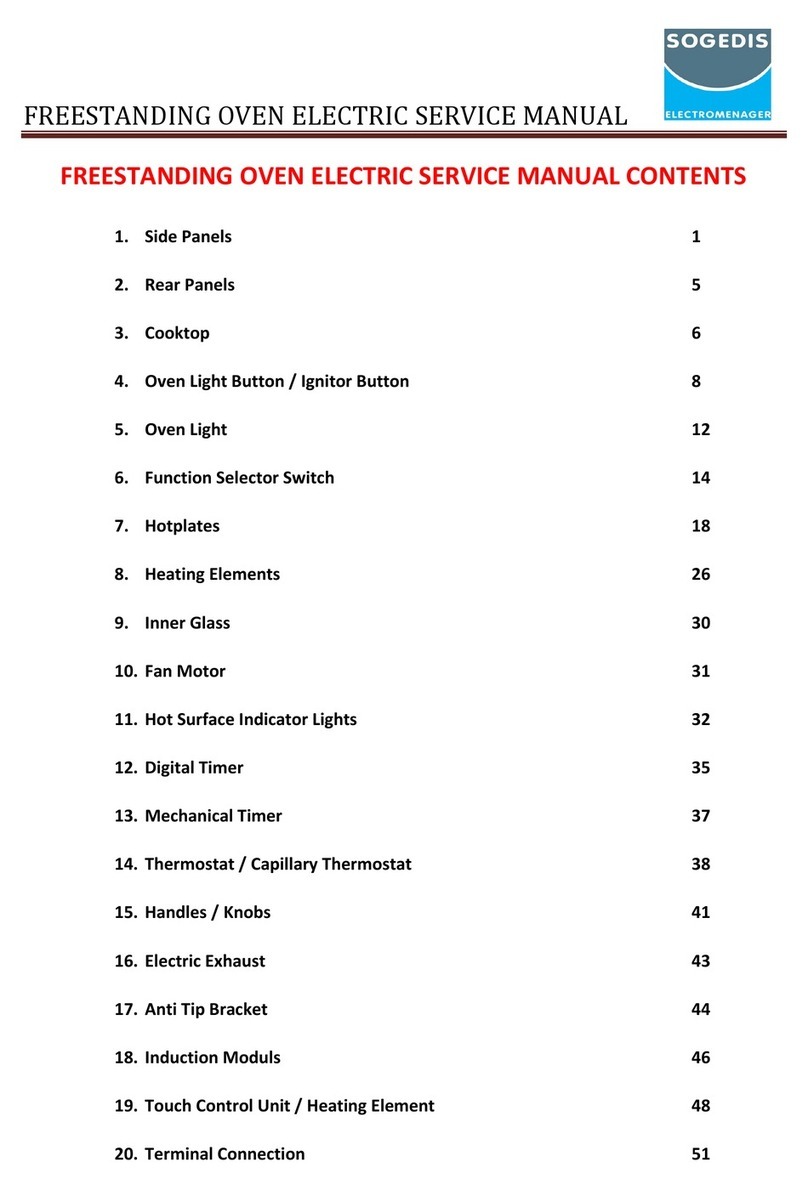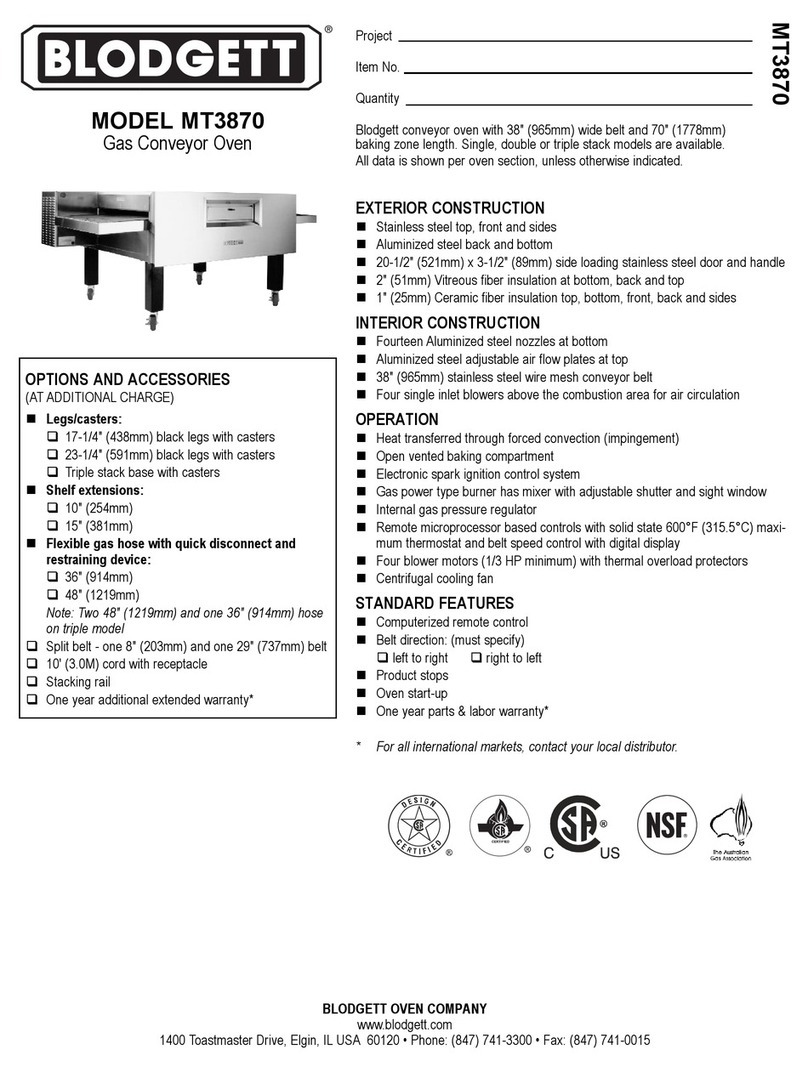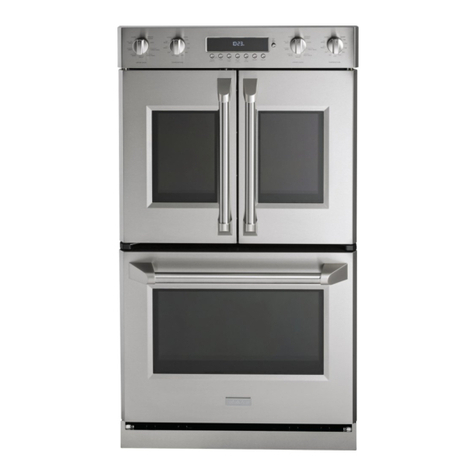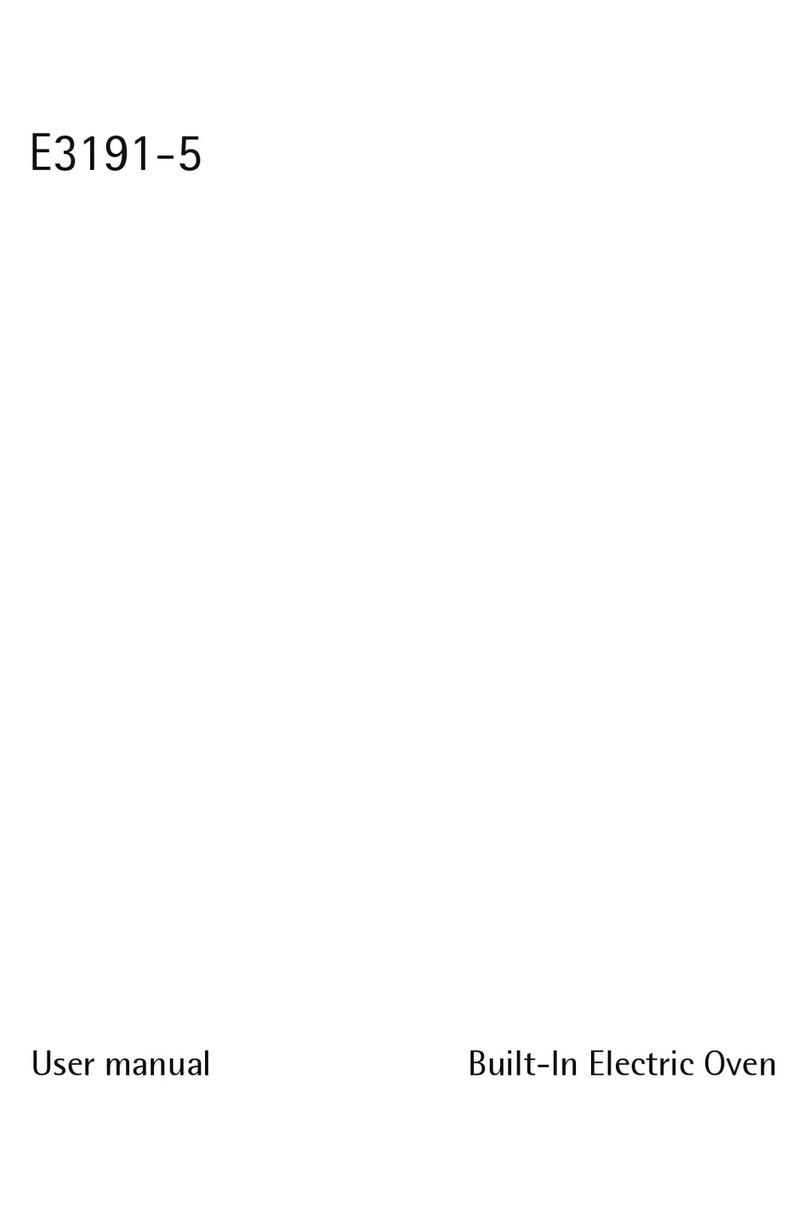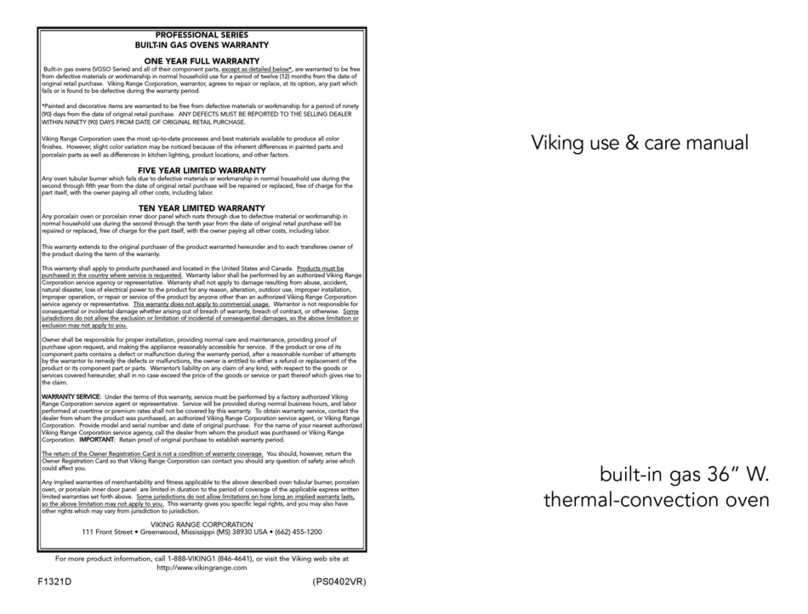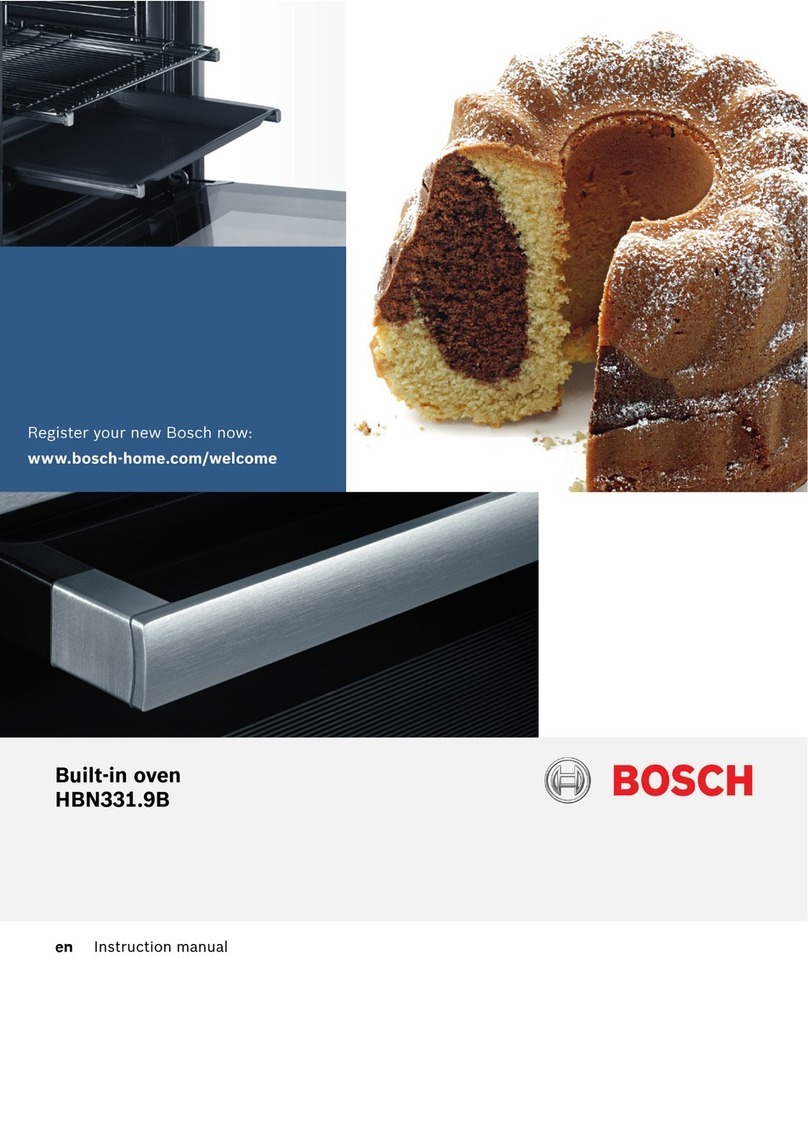
19
18
BAKING AND GRILLING TIPS BAKING AND GRILLING TIPS
BAKING TIPS
• How to establish whether sponge cake is baked through. Approximately 10 minutes before the
end of the baking time specified in the recipe, stick a cocktail stick into the cake at the highest
point. If the cocktail stick comes out clean, the cake is ready.
• Use less liquids next time if the cake collapses or set the oven temperature 10 degrees lower.
bserve the specified mixing times in the recipe.
• The cake has risen in the middle but is lower around the edge. Do not grease the sides of the
spring form cake tin. After baking, loosen the cake carefully with a knife.
• The cake goes too dark on top. Place it lower in the oven, select a lower temperature and bake
the cake for a little longer.
• The cake is too dry. When it is done, make small holes in the cake using a cocktail stick. Then
drizzle fruit juice or an alcoholic beverage over it. Next time, select a temperature 10 degree
higher and reduce the baking time.
• The bread or cake (e.g., cheesecake) looks good, but is soggy on the inside (sticky, streaked with
water). Use slightly less liquids next time and bake for slightly longer at a lower temperature. For
cakes with a moist topping, bake the base first. Sprinkle it with almonds or bread crumbs and then
place the topping on top. Please follow the recipe and baking times.
• The cake is unevenly browned. Select a slightly lower temperature to ensure that the cake is
baked more evenly. Bake delicate pastries on one level using Top/bottom heating. Protruding
greaseproof paper can affect the air circulation. For this reason, always cut greaseproof paper to
fit the baking tray.
• The bottom of a fruit cake is too light. Place the cake one level lower the next time.
• The fruit juice overflows. Next time, use the deeper universal pan, if you have one.
• Small baked items made out of yeast dough stick to one another when baking. There should be a
gap of approx. 2 cm around each item. This gives enough space for the baked items to expand
well and turn brown on all sides.
• Baking on several levels. The items on the top baking tray are darker than that on the bottom
baking tray. Always use 3D hot air to bake on more than one level. Baking trays that are placed in
the oven at the same time will not necessarily be ready at the same time.
• Condensation forms when you bake moist cakes. Baking may result in the formation of water
vapour, which escapes above the door. The steam may settle and form water droplets on the
control panel or on the fronts of adjacent units. This is natural process.
GRILLING TIPS
• When grilling, preheat the oven for approx. 4 minutes, before placing the food into the cooking
compartment. Always grill with the oven door closed.
• Wherever possible, ensure the pieces of food for grilling are of equal thickness. This will allow
them to brown evenly and remain succulent and juicy.
• Turn the food you are grilling after 2⁄3 of the time.
• Do not add salt to steaks until they have been grilled.
• Add in a little liquid if the meat is lean. Cover the base of the ovenware with approx. 1/2cm of
liquid.
• Add liquid generously for pot roasts. Cover the base of the ovenware with approx. 1–2 cm of
liquid.
• Place the food to be grilled directly on the wire rack. If you are grilling a single piece, the best
results are achieved by placing it in the centre of the wire rack. The universal pan should also be
inserted at level 1.The meat juices are collected in the pan and the oven is kept cleaner.
• When grilling, do not insert the baking tray or universal pan at level 4 or 5.The high heat distorts it
and the cooking compartment can be damaged when removing it.
• The grill element switches on and off continually. This is normal. The grill setting determines how
frequently this will happen.
• When the roast is ready, turn off the oven and allow it to rest for an additional 10 minutes. This
allows better distribution of the meat juices.
• Place whole poultry on the lower wire rack breast-side down. Turn after 2⁄3 of the specified time.
• For duck or goose, pierce the skin on the underside of the wings. This allows the fat to run out.
• Turn the pieces of fish after 2⁄3 of the time, whole fish does not have to be turned. Place the
whole fish in the oven in its swimming position with its dorsal fin facing upwards. Placing half a
potato or a small ovenproof container in the stomach cavity of the fish will make it more stable.
• How to tell when the roast is ready. Use a meat thermometer (available from specialist shops) or
carry out a “spoon test”. Press down on the roast with a spoon. If it feels firm, it is ready. If the
spoon can be pressed in, it needs to be cooked for a little longer.
• Check the shelf height and temperature if the roast is too dark or the crackling is partly burnt.
• The roast looks good but the juices are burnt. Next time, use a smaller roasting dish or add more
liquid.
• The roast looks good but the juices are too clear and watery. Next time, use a larger roasting dish
and use less liquid.
• Steam rises from the roast when basted. This is normal because most of the steam escapes
through the steam outlet. It may settle and form condensation on the cooler switch panel or on the
fronts of adjacent units.
